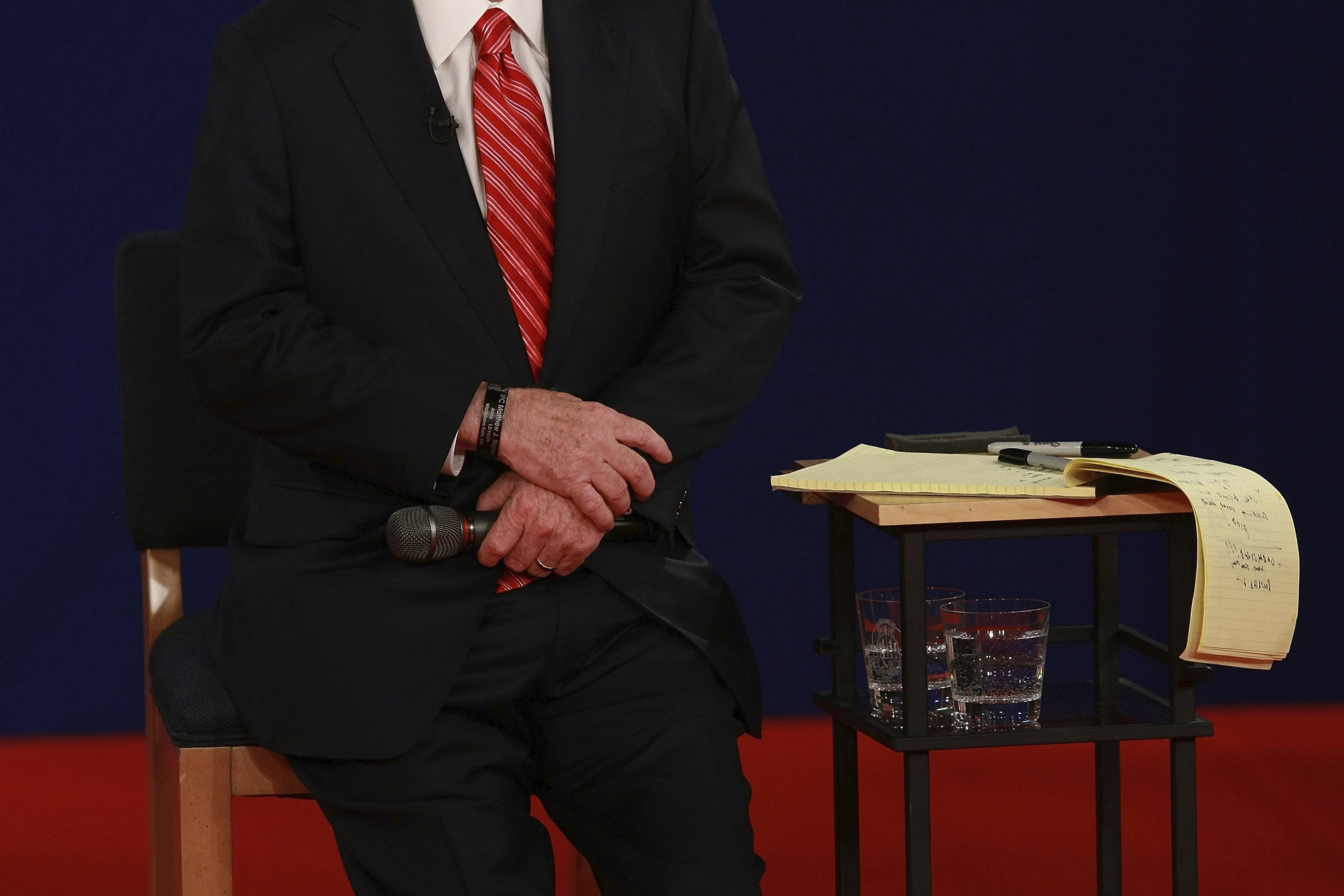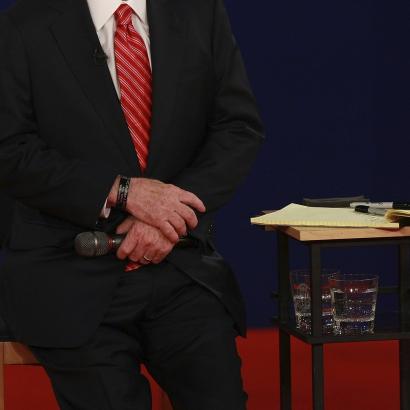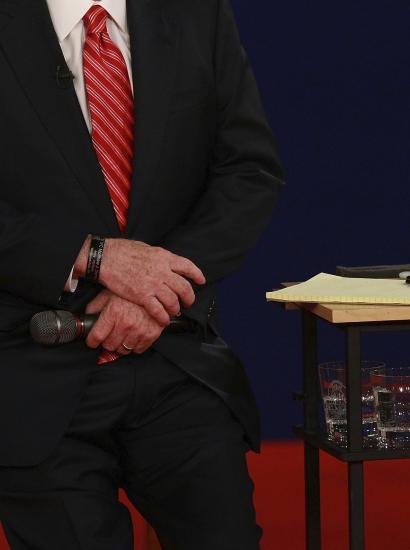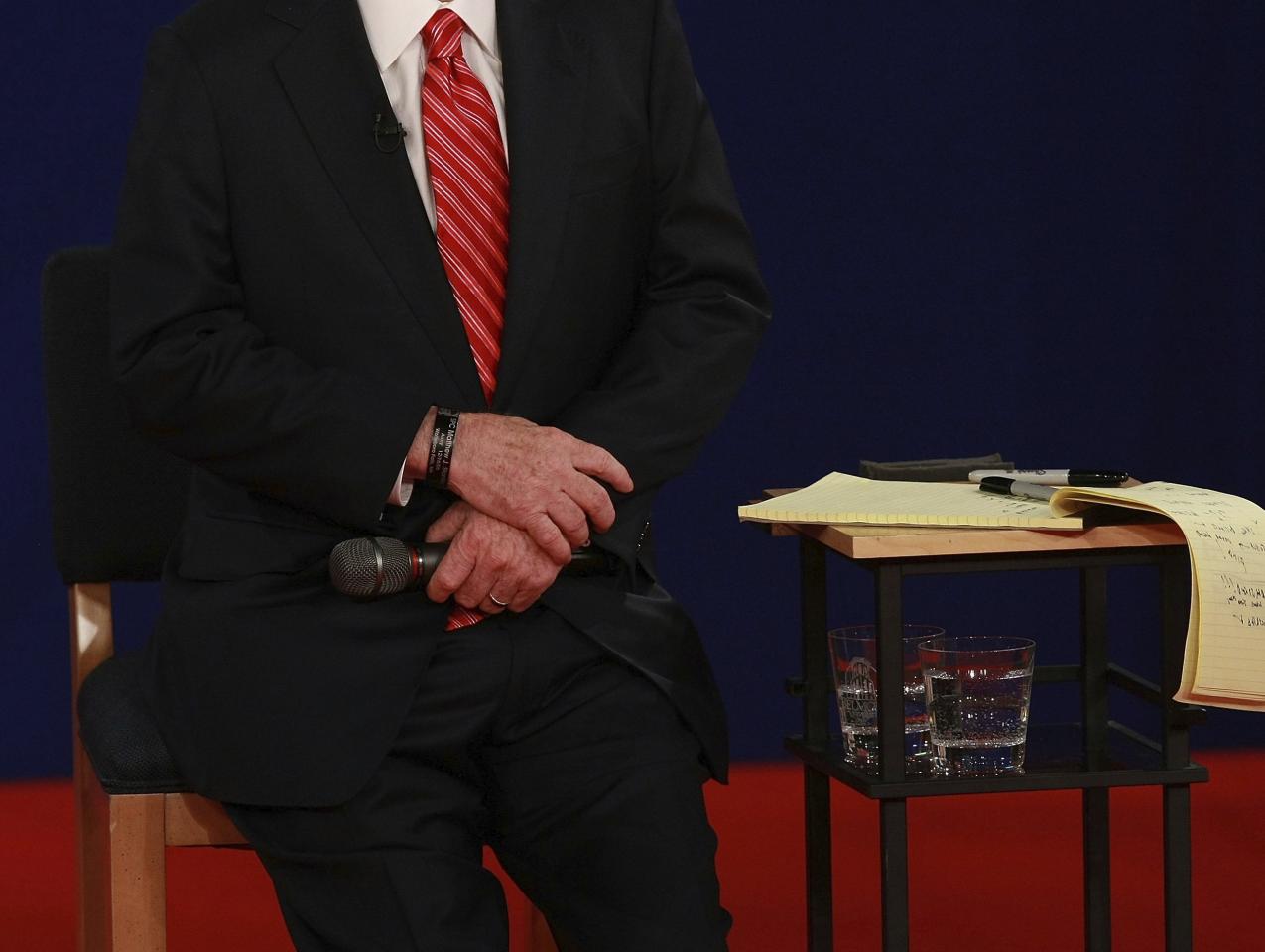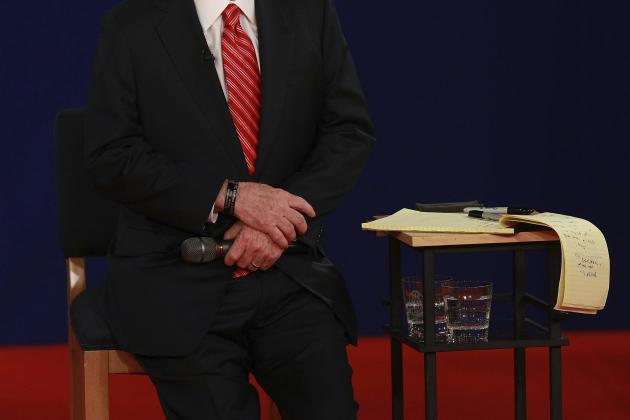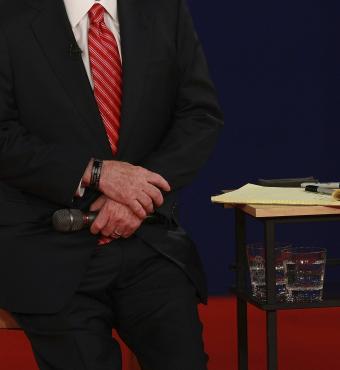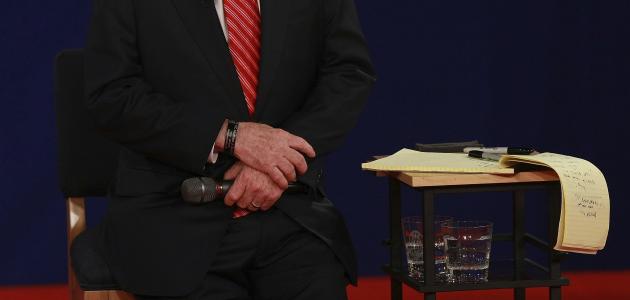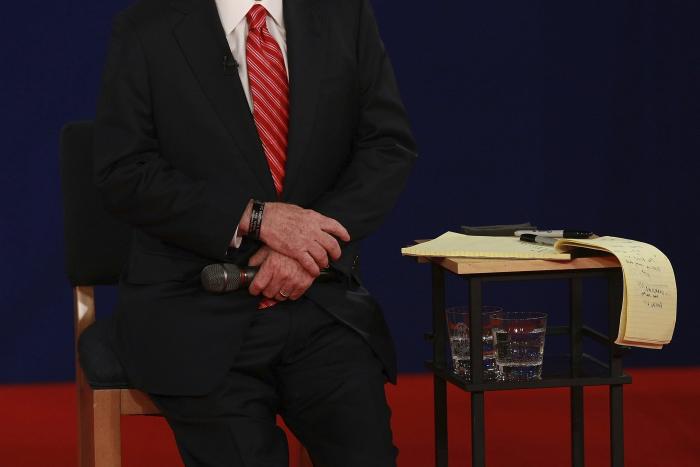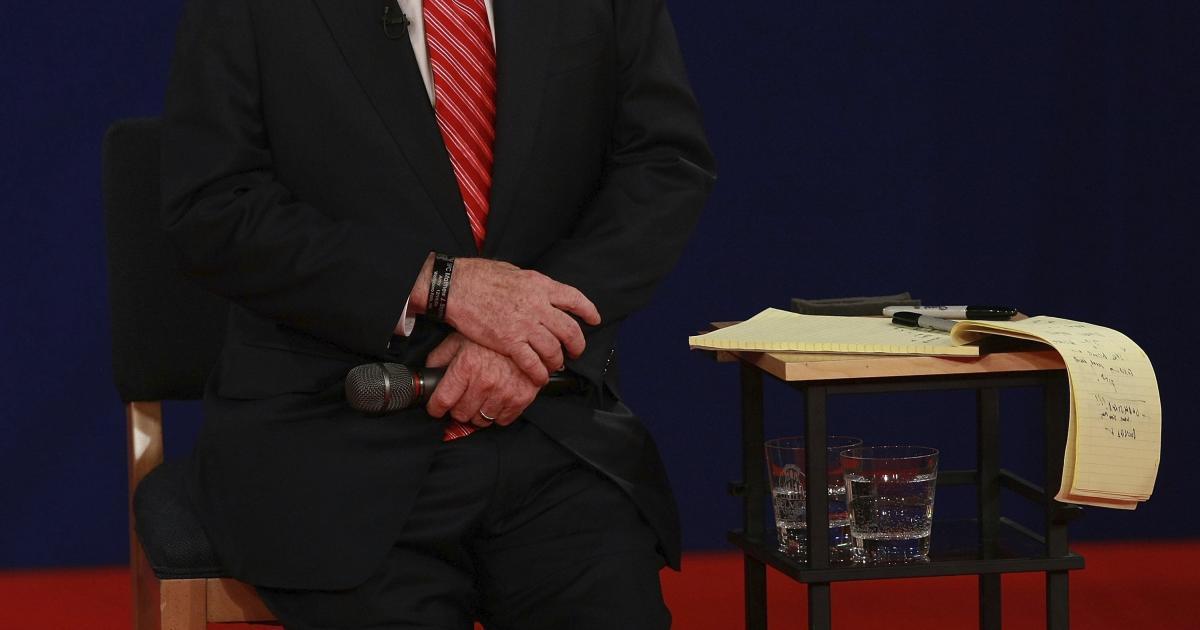It was 165 years ago that an American nation both deeply divided and destined to fall into two camps (blue and gray) was granted an eight-week reprieve in the form of stately debates between Republican and Democratic senatorial candidates who’d go on to face each other in the next presidential election.
We’re referring, of course, to the fabled Lincoln-Douglas series of debates, with Republican Abraham Lincoln and Democrat Stephen A. Douglas facing off in seven Illinois congressional districts and abiding by rules not germane to tomorrow’s limited-attention Information Age (in each debate, Lincoln or Douglas would start with a one-hour oration, followed by a 90-minute response and then a 30-minute rebuttal).
The same likely won’t be said of tomorrow’s 90-minute televised debate between California governor Gavin Newsom and Florida governor Ron DeSantis (it airs on the Fox News Channel at 9 pm, EST), as a time-out from acidic discourse it likely won’t be.
You can forget about mutual respect. In the past, DeSantis has mocked Newsom’s gel-coiffed hair; Newsom, in turn, has called his counterpart in Tallahassee a “small, pathetic man.”
Indeed, one fears not an elevated conversation but instead a rhetorical race to the bottom—in this debate, DeSantis potentially taking pot shots at Newsom’s three-star culinary destinations and basketball motor skills, with the taller Newsom perhaps suggesting that the only boost DeSantis is getting is in his boots.
That said, there is an opportunity for the principals to make the case for the predominant colors of 21st-century America—not blue and gray, but conservative red and progressive blue. But that depends on whether Newsom and DeSantis can keep their cool, and their respective egos in check, and stick to more substantive matters.
In this regard, this is the debate America deserves, certainly at a time when the 2024 presidential election seems headed toward an unpopular replay of Donald Trump and Joe Biden (I refer you to this Economist/YouGov poll that shows 60% of voters don’t want Biden to seek reelection, with 56% feeling the same about Trump’s candidacy).
Put another way, tomorrow’s debate could be distilled to one simple question: Which state, as currently managed by these two governors, would you rather see the nation as a federalized version of, California or Florida?
In the spirit of Fox News’s bygone slogan “fair and balanced,” here’s some unsolicited advice for tomorrow’s debate participants.
Let’s start with Newsom, whom I’d handicap as the favorite given three factors that work to his advantage: first, reportedly he’s done his homework for the debate (one wonders how much time DeSantis will have spent doing the same considering he’s an active presidential candidate); second, based on past Fox News appearances, Newsom can easily handle Sean Hannity, the Fox News personality who’s tomorrow’s moderator; third, Newsom’s skilled at the art of mixing facts, half-truths, and falsehoods during cable television interviews.
The first advice for Newsom: don’t kick a man while he’s down, tempting though it may be.
With the Iowa presidential caucuses less than six weeks away, DeSantis’s White House ambitions rest upon an all-in best in the Hawkeye State—a far cry from his “de facto frontrunner” status of a year ago. Back home in Florida, one head-to-head poll shows former president Donald Trump holding a 39-point advantage over his Republican challenger. Florida Republicans go to the polls on March 19; barring an unexpected turns of events such as an upset win or a close second-place finish in Iowa, DeSantis may have suspended his campaign by then.
So what should Newsom emphasize in his case against DeSantis and red-state America?
My recommendation would be to focus on abortion rights. For three reasons:
- First, it dovetails with Newsom-financed television buys in the Sunshine State and the nation’s capital lambasting “Ron DeSantis’ Florida” for restrictive abortion policies (the ad, narrated by Newsom, shows a “wanted” sign featuring a woman and a doctor).
- Second, it highlights a policy divide between DeSantis and the rest of the GOP presidential field. Whereas DeSantis signed a six-week ban into law last April, former South Carolina governor Nikki Haley tries to thread the needle on restrictions, with Trump at one point labeling DeSantis’s action “a terrible thing and a terrible mistake.”
- Third, it’s a chance for Newsom to subtly convey to his fellow Democrats that he’s a team player trying to complement rather than supplant the party’s leader (in September, the Biden campaign made digital-ad buys likewise showcasing Florida’s six-week abortion ban).
And what should DeSantis have to say about Newsom, California, and blue-state America?
Two words: COVID restrictions (and their consequences, especially for schoolkids).
DeSantis could cite this recent New York Times editorial on the very topic (“The school closures that took 50 million children out of classrooms at the start of the pandemic may prove to be the most damaging disruption in the history of American education”). And follow that up with a few disturbing facts about the quality of public K–12 education in the Golden State (for example, California test scores remaining far behind their pre-COVID levels).
For DeSantis, such an approach has the following benefits:
- First, it’s an opportunity to swing the conversation to California’s brand of bureaucratic, ofttimes nonsensical, “common sense” measures (until the US Supreme Court intervened, the Golden State banned indoor church services in counties considered at higher risk of virus transmission). It might come as news to debate watchers that, nine months after California ended its COVID-19 State of Emergency order, some Golden State companies are still hounded by Department of Public Health outbreak investigators.
- Second, it’s a chance to remind the public of what brought Florida’s governor to national attention. By doing the opposite of California and opening schools earlier than most blue-state districts while also opening all Florida businesses regardless of local restrictions, DeSantis gambled on a different COVID approach—and won.
- Third, If the goal of the evening isn’t so much to get Newsom’s goat as to win over Iowa caucus-goers (according to this recent poll, at least half of likely Hawkeye voters said their minds are still open at this point), DeSantis could also mention that Trump once awarded a presidential commendation to Dr. Anthony Fauci, the controversial longtime federal infectious disease expert (DeSantis has raised this in past interviews).
One final debate thought—and it has to do with a word that both governors embrace: freedom (Newsom using it ad nauseam during his second inaugural address; DeSantis using it as an adjective for his state’s budgetary framework).
Earlier this month, the Cato Institute released the seventh edition of its “Freedom in the 50 States” study, measuring how public policies “affect individual freedoms in the economic, social, and personal spheres” (here’s how it’s calculated).
Florida’s ranking? Second only to New Hampshire in both “overall” and “economic” freedom but only 22nd in “personal” freedom (described as “a variety of categories including victimless crimes, guns, tobacco, and education”).
And California? It places 48th in both overall and economic freedom (only Hawaii and New York ranked lower) but 11th in personal freedom.
In other words, each governor can claim to be a liberator while alleging his debate foe fosters an oppressive environment in his home state.
To paraphrase the Fox News marketing slogan that replaced “fair and balanced”: they retort, you decide.







